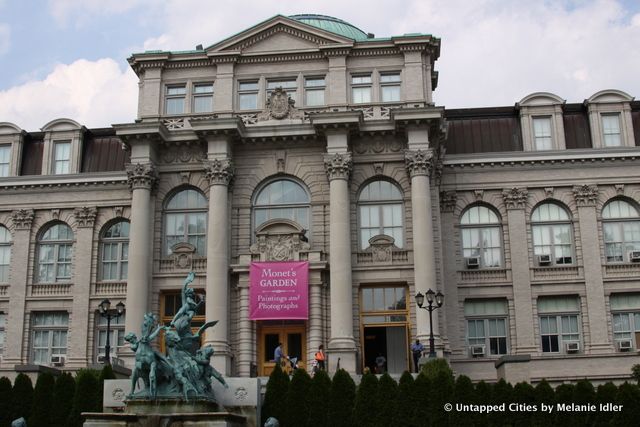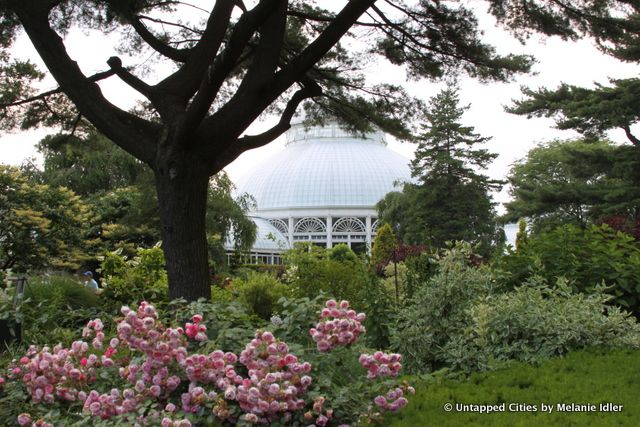

“My garden is my most beautiful masterpiece.”
-Claude Monet

As a former intern at the New York Botanical Gardens, I was eager to set foot again through the familiar gates that lead to this Bronx oasis. On this occasion I was there to see Monet’s Garden, a unique collaboration between the Garden and The Metropolitan Museum of Art that juxtaposes the renowned painter’s famous masterpieces, and the botany that inspired him. It seems Monet’s green thumb effortlessly transitioned between hoe and paintbrush, with the exhibit itself evoking contemplation on the intersection of paintings and plants, and the profound connections between art and nature.
Previously Monet painted what others had created: cathedrals, haystacks and the newly invented locomotive. But at Giverny, he dedicated the remainder of his life to his passion for gardening, shaping the flowerbeds that would become the subjects of his painterly canvases. Monet’s paintings offer a pure fantasy of being in nature without physical constraint, and the Gardens realize this reverie. Organized by Paul Hayes Tucker, the world’s premier scholar on Monet and Impressionism, the exhibit recreates Monet’s gardens using the detailed accounts of his horticultural activities. The multifaceted exhibition included photographs of his preserved garden at Giverny in northern France (which receives half a million visitors each year), rare documents and letters, and two of the impressionist’s paintings on loan from the Yale Art Gallery.
Tucker chose two garden-inspired Monet paintings that complement the exhibit. Gracing the halls of the Mertz Library’s Rondina Gallery, The Artist’s Garden in Giverny and Irises are prime examples of an Impressionistic take on a light-dappled garden scene. Also on display is Monet’s painting palette, the only one known though his garden offered what was to be a wholly different kind of palette. While the show’s emphasis is not on Monet’s painting, examining his art through the vernal lens of his garden offers further insight into the Impressionists’ two great loves: of light and color.

Coming from the hushed, dimly lit halls that held Monet’s still-lifes, entering the perfectly manicured lawns of the botanical gardens provided room for thought on the overlap between nature and art throughout the ages, and whether one were superior to the other (or even if they can both be considered art). The Enid A. Haupt Conservatory, the Garden’s majestic Victorian greenhouse, has been transformed to recreate Monet’s home in Giverny. The exhibit is as breathtaking as any one of Monet’s masterpieces, with the aesthetic appeal of the French countryside. One first enters the floral bliss of the Grand Allée and its riotously colorful flowers, complete with a facade of Monet’s pink house. Green metal arches frame the walkway, leading to a green gate swung open to reveal a reproduction of the iconic Japanese footbridge featured in so many of Monet’s paintings. The flowers chosen were planted by Monet himself, though notably absent were the water lilies that Monet spent the last years of his life painting (water lilies do not do well indoors). The pond’s reflections and shifting light on the water dominated his abstract paintings of water lilies. There were just a few outdoors in the Conservatory Courtyard’s Hardy Pool, but they will be in full bloom by July.
The colorist’s paintings evoked vivid fantasies of optical immersion in atmospheric nature. A beautifully staged formal, European-style garden offers this same immersion: a respite from the industrial city around it. The Garden provides relief from feelings of entrapment in a denaturalized world. With this noble intent, the work of artist and gardener are indeed in sync.
Monet’s Garden is open until Oct. 21 at the New York Botanical Garden. For more information, visit nybg.org.


